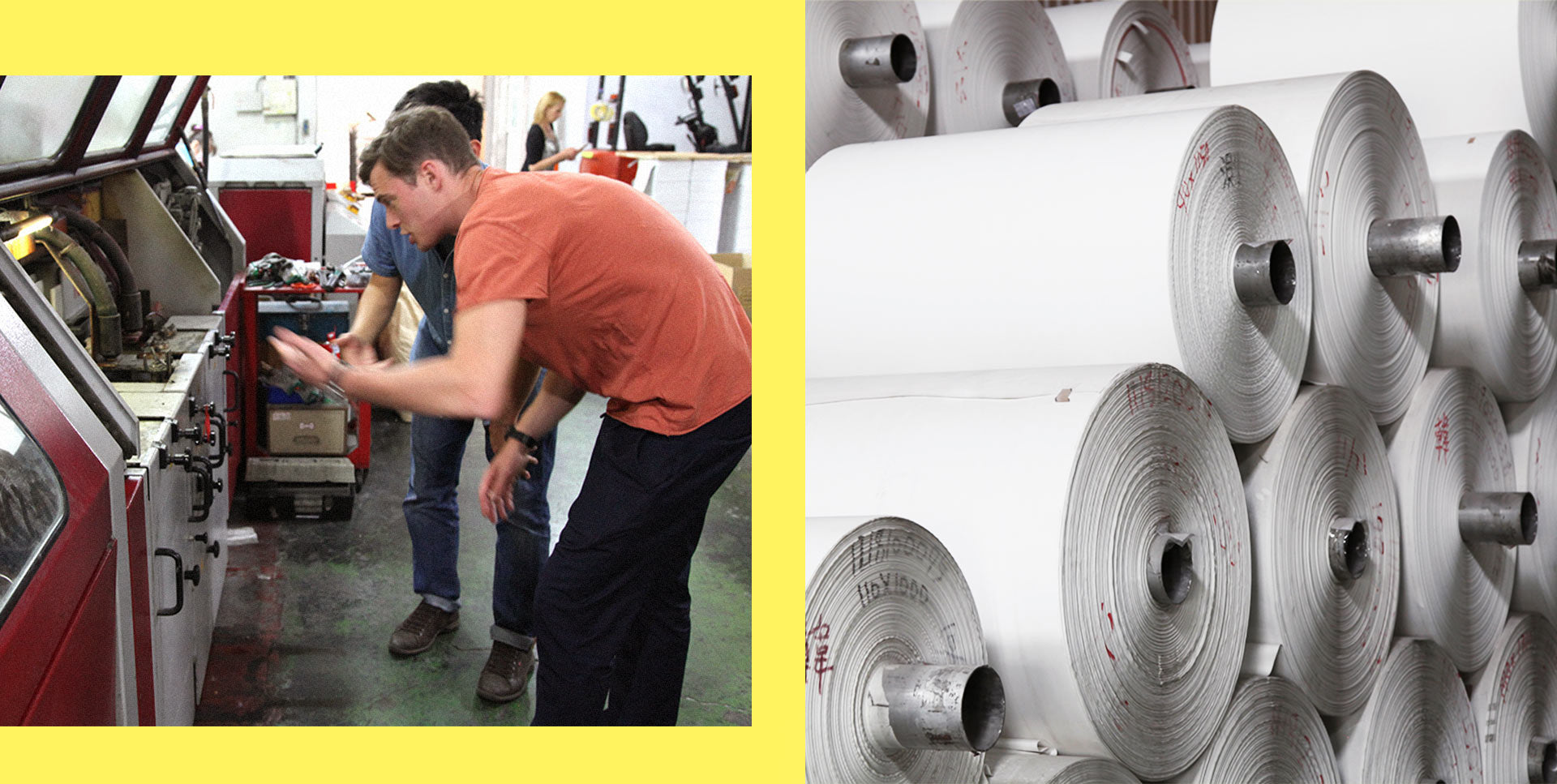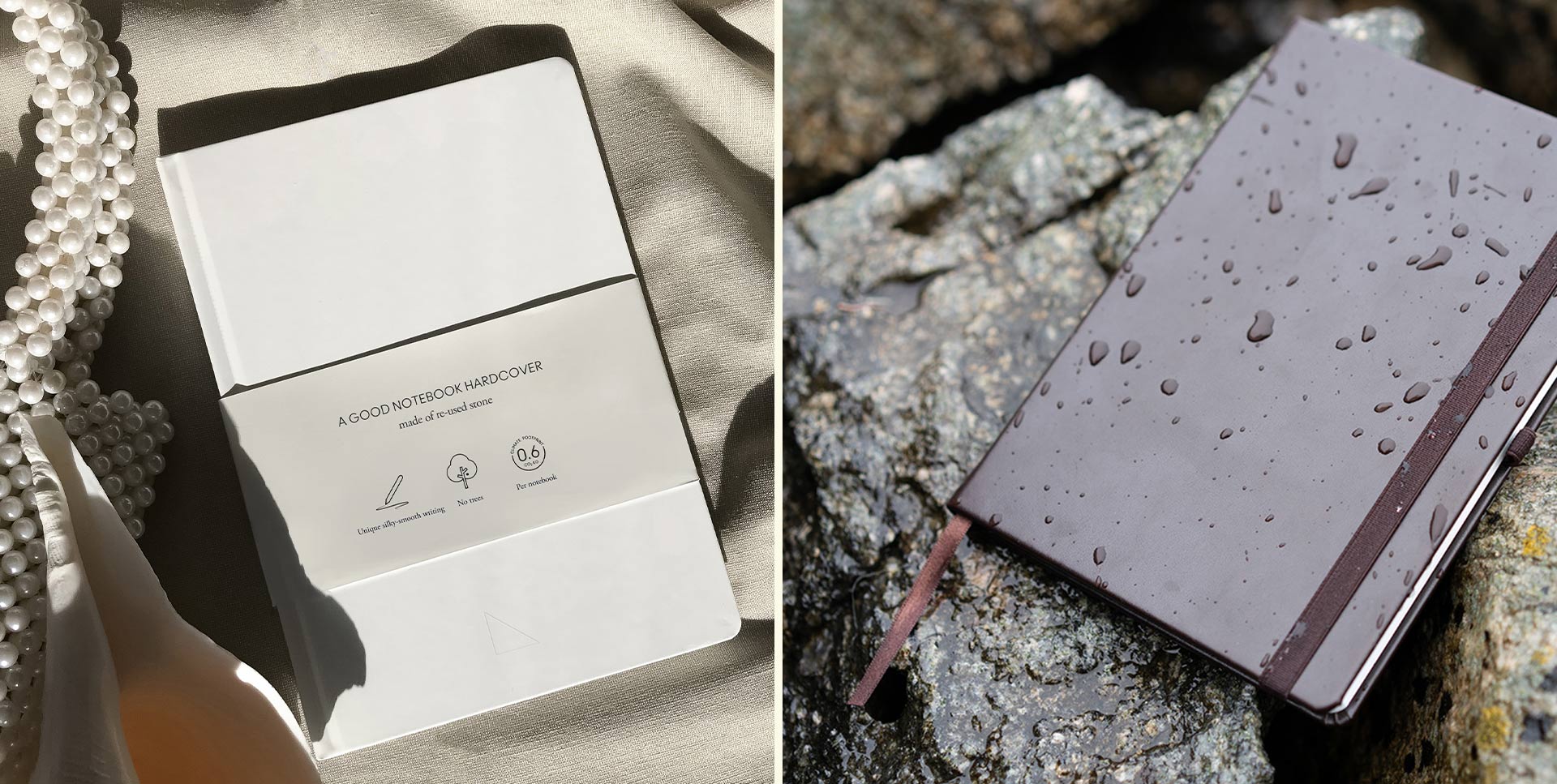Stone paper was developed as an environmentally friendlier alternative to traditional wood pulp paper. Leftover stone from local industries is mixed with a small amount of recycled BPA-free plastic in a process that uses no water or chemicals and is powered by solar.
Stone paper vs traditional pulp paper—the environment
Making paper from stone, as opposed to wood pulp, is better for the environment. First of all, no trees have to be cut down. Secondly, the process of converting the raw materials into paper is much cleaner, using no water or chemicals and powered by solar energy. More on this below.
Stone paper vs traditional paper—usability
From a user perspective, there are a number of benefits of stone paper over traditional wood pulp paper. Stone paper is waterproof, tear-resistant and has no grain direction, resulting in a silky-smooth writing experience. It can also withstand grease and dirt, making it ideal for use in the great outdoors or in a steamy kitchen.
How stone paper is made
Making paper out of stone is a fascinating process. At agood company, we produce our stone paper in a lovely, family-owned factory in Taiwan, that has improved and refined its production processes for several decades.
The factory uses leftovers that it gets from a neighbouring construction industry — mainly limestone and marble — which it crushes into a fine calcium carbonate powder. Calcium carbonate is a completely natural product that is abundant on the earth and used in many industries. It can be found in a range of everyday products such as toothpaste, medicine and baby powder.


The calcium carbonate powder (80%) is mixed with recycled non-toxic high-density polyethylene (HDPE) — a material that can be recycled almost indefinitely — to create small white pellets the size of candy. The pellets are squeezed into a material that resembles traditional paper. The process uses no water, acids, or bleaches and is powered by solar energy.
How traditional paper is made
Traditional paper is made from wood pulp, mainly made from trees such as spruce or pine. Some of the top wood-pulp producing countries globally are the U.S., Canada, Brazil, China, Sweden and Finland.
Many people mistakenly think paper is a natural product that isn’t very harmful to produce, but that couldn’t be further from the truth. In fact, the production of traditional paper consumes vast quantities of raw material and energy, in addition to lots of chemicals and water.
The first step in producing traditional pulp-paper is to cut down large quantities of timber, which is a big contributor to global deforestation. These tree logs are then passed through a debarker, where the bark is taken away, and through chippers, where the wood is cut into pieces.
The resulting wood chips are then pressure-cooked with a mixture of water and chemicals in a digester, to create basic wood-pulp. The pulp is then washed, refined, bleached and turned into to slush in a beater, after which dyes, coatings and other additives are added to the mix.
Once the pulp is ready, the cellulose fibers in the pulp need to be separated from the water. In fact, 90% of wood-pulp is water, so the separation results in large quantities of waste-water. The dry pulp is then sprayed upon moving mesh screens to make a layered mat of paper, which goes through several energy-consuming processes to dry.
What about recycled paper?
When paper is recycled, it’s taken from our recycling bins to a recycling plant where different types of paper and packaging is separated into types and grades. The paper is then washed with soapy water to remove inks, plastic film, staples and glue. The paper is put into a large holder where it is mixed with water to create recycled pulp.The recycled pulp is then mixed with virgin wood-pulp to create different grades of recycled paper that can be used for things like newspapers, toilet paper or packaging material. Paper can only be recycled between five to seven times in total.


More environmentally friendly and better to use
To summarize, stone paper has some clear benefits vs traditional wood pulp paper:
- It is water resistant.
- It is resistant to tearing.
- It is made with solar power.
- It is produced using only recycled materials, no deforestation
- It is produced without any added chemicals.
- It is produced without using water.
We use stone paper to make our range of notebooks and journals because it's a better alternative for both the environment and the customer. Further, we compensate every purchase with the planting of one tree, contributing to a positive environmental impact.



